Chasing Their Star, on YouTube
by Leslie Kaufman - THE NEW YORK TIMES
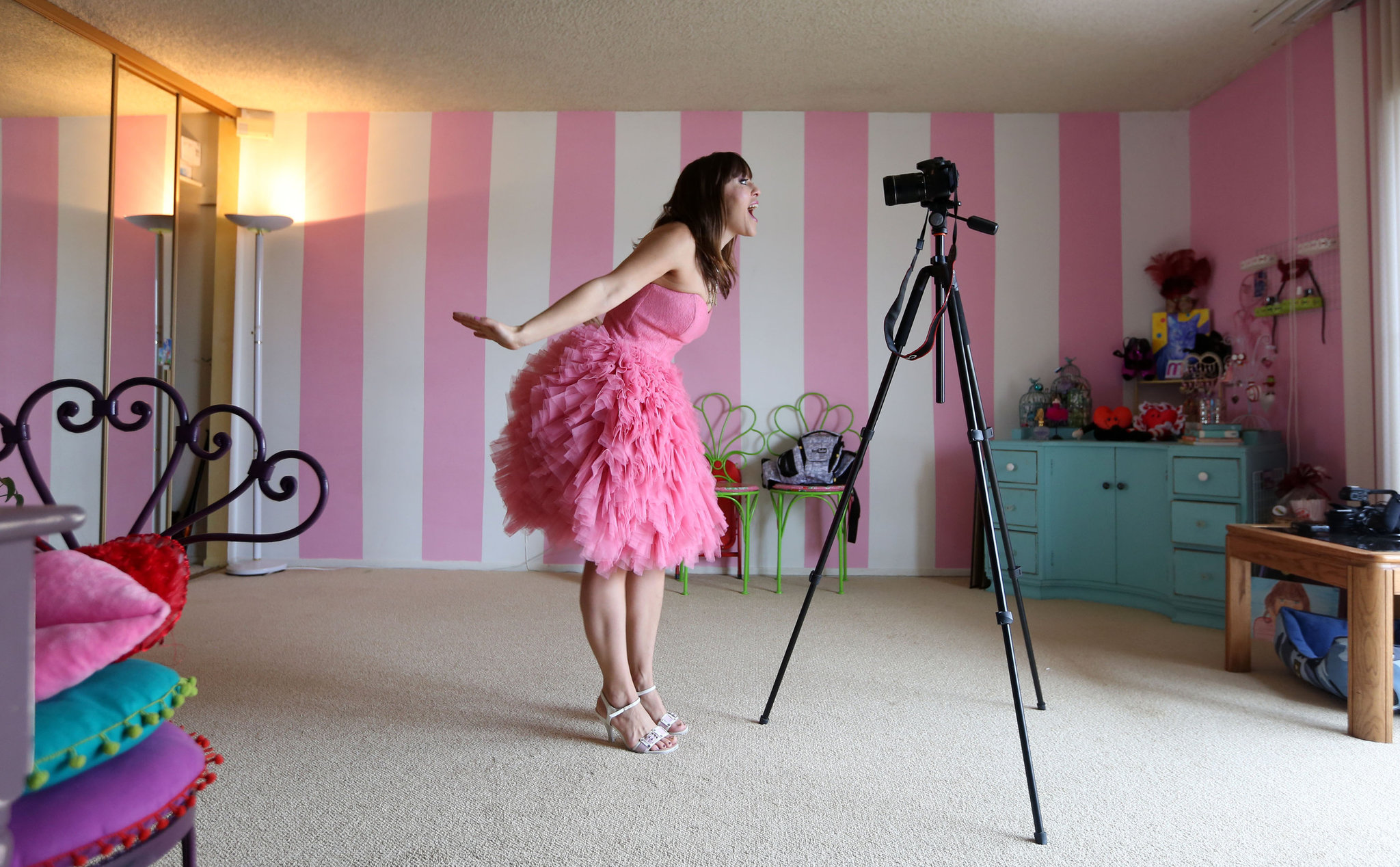
Olga Kay, a former juggler, uses her home in Encino, Calif., as a studio to make videos for her various channels on YouTube which attract about a million subscribers. – J. EMILIO FLORES FOR THE NEW YORK TIMES
It is 3 p.m., and outside another brilliant Los Angeles afternoon beckons. But Olga Kay has drawn her blinds, leaving her living room in a semidarkened haze.
She has been up since 8 a.m., though she is still in her pajamas and has ventured outside only briefly to walk her dog, Roxy. Otherwise, Ms. Kay sits cross-legged in front of a glowing screen, offering cheerful commentary as she navigates her way through the violent video game Grand Theft Auto 5.
The video game marathon is not a diversion — it is her job. Ms. Kay, 31, is part of an emerging group of entertainers who are trying to make a living by producing content for YouTube. On this particular weekend, she is filming a week’s worth of segments for her online game channel, because during the week she must feed the rest of her network.
Yes, network. With neither writers nor producers, she has made herself the star of five channels on YouTube that together attract roughly one million subscribers. That following helps her earn money through advertising, sponsorships and merchandise like Olga Kay knee socks.
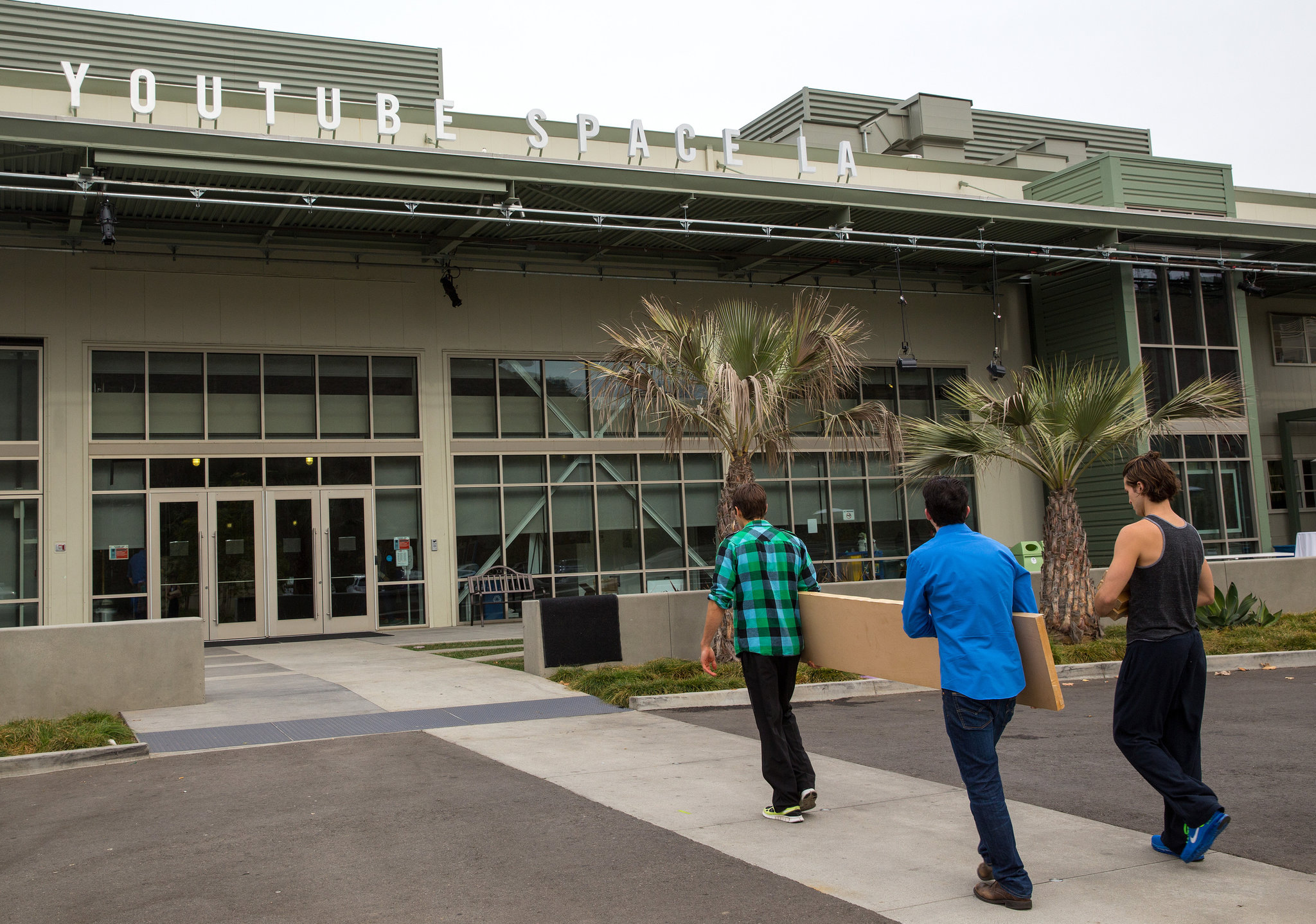
The YouTube production center in Los Angeles, where video creators produce and edit original content. MONICA ALMEIDA / THE NEW YORK TIMES
It’s a living. But it’s a frantic one. The 5-foot-1-inch Ms. Kay, who started her entertainment career as a juggler in Russia, is a juggernaut who has turned everything in her life into material for her videos.
Her living room has become a studio for Olga Kay Games, the hall space outside her kitchen is used as an editing suite and her bedroom has been wallpapered in pink and white stripes to create a background for the taping of “Mooshville,” on which she gives makeup and fashion tips to her fans, who are largely young and female. There is even a channel featuring Roxy, her Shih Tzu.
In total, she posts at least 20 videos a week to her main channels — a punishing pace. “It is very stressful,” she says. “Every morning I wake up and think, ‘What can I do that’s different that will keep me relevant for another year?’ ”
Ms. Kay is in the vanguard of a do-it-yourself entertainment revolution, which YouTube has been nurturing since its inception in 2005. Once an outlet for zany antics and animal videos, YouTube has more recently sought to attract the kind of high-quality programming that advertisers will want to buy against. To do that, it has been providing resources and incentives to help amateur video makers step up their game.
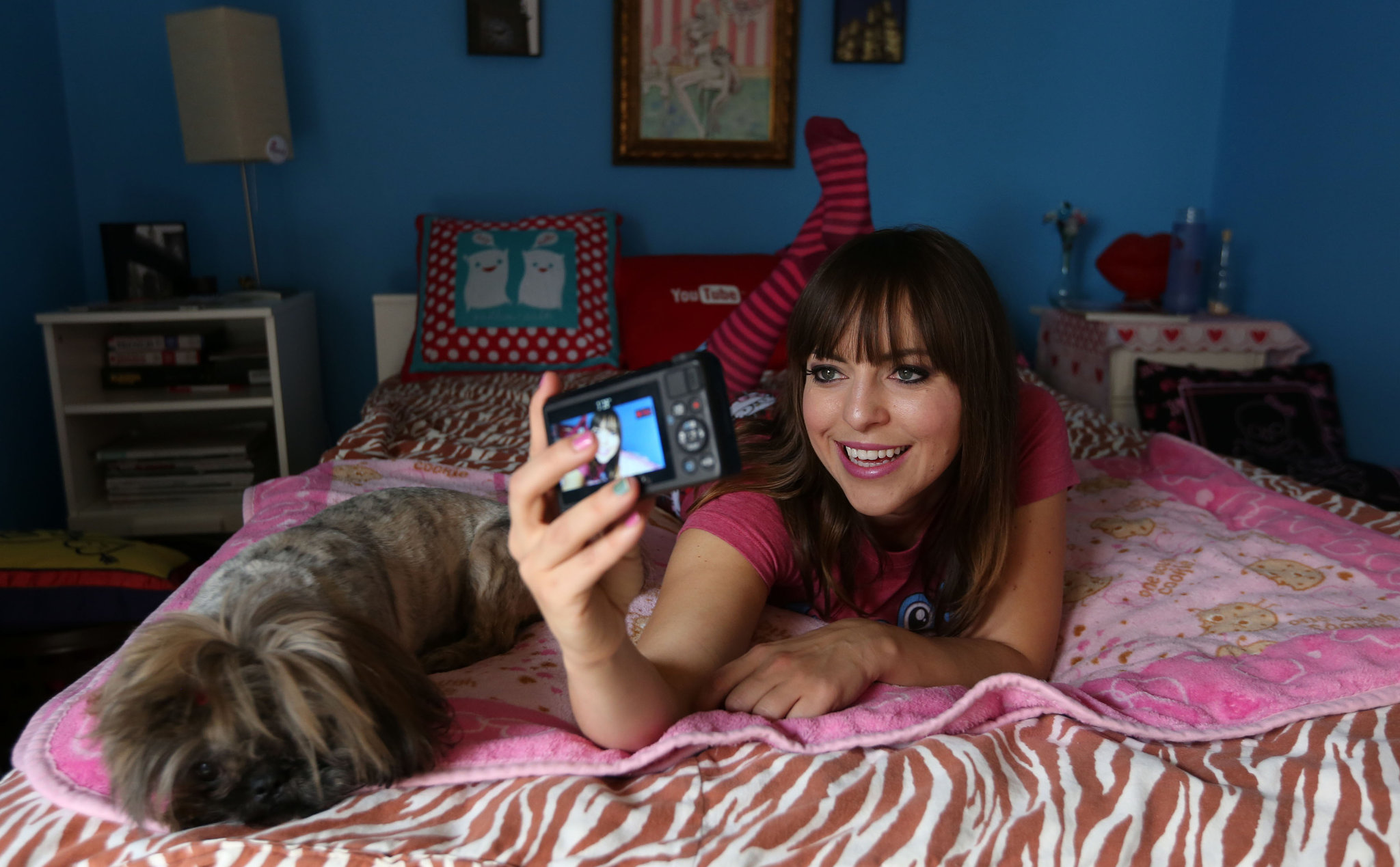
Ms. Kay, 31, is part of an emerging group of entertainers who are trying to make a living by producing content for YouTube. – J. EMILIO FLORES FOR THE NEW YORK TIMES
In 2012, YouTube announced a partners program that would allow content producers to share with YouTube the ad revenue from their videos. The company had allowed some ad sharing as early as 2007, but the simplicity of the new model set off a gold rush: All creators have to do is click a button agreeing to let Google sell advertising that will appear on their site in return for a share of the revenue. Today, the company says, there are a million “partners” trying to make money off the platform, ranging from venture-backed enterprises that fill warehouses in Los Angeles to amateur cooks working out of small kitchens in São Paulo, Brazil.
That same year, the company gave more than 100 content producers grants of roughly $1 million apiece to improve the quality of their videos. And it has built huge, modern production facilities that are open for no charge to YouTube contributors in Los Angeles, London and Tokyo. (A New York studio will open at the end of 2014.)
The message to aspiring video makers was clear, and seductive: Come to YouTube, attract an audience, build your brand and even make real money.
But success, let alone stardom and wealth, remain elusive. YouTube is vague on its numbers and says only that thousands of channels, among the million or so that collect revenue directly through the partners program, earn at least six figures in revenue.
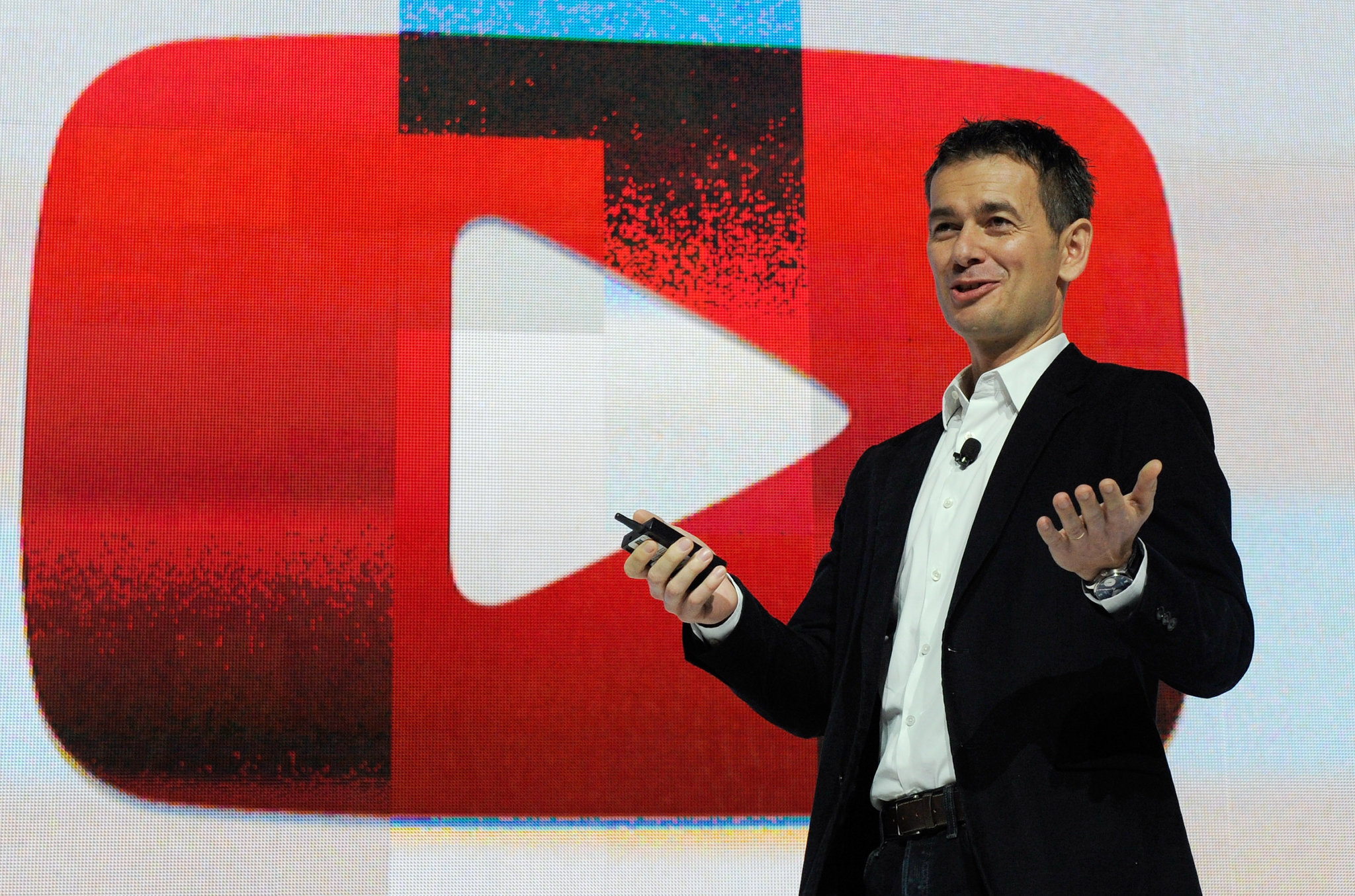
Robert Kyncl, YouTube’s head of content and business operations, said declining ad rates were a small price to pay for the vast growth in video creation. – ETHAN MILLER / GETTY IMAGES
Ms. Kay, who has been slogging away since 2006 to be in this elite group, says she has earned from $100,000 to $130,000 in each of the last three years. And while that’s a good income, she puts much of it back into her business, investing in merchandise, equipment and staff.
Moreover, she shares a growing list of worries with other creators: the precipitously dropping prices that advertisers are willing to pay, the huge increases in uploaded content that has made it harder for viewers to find their work, and the escalating costs of producing higher-quality content.
“Everyone is a little afraid for their income levels,” she says. “We are all growing in subscribers yet decreasing in views and advertising.”
Then there is YouTube’s cut of the profits. The company would not provide details, but content creators say the company takes 45 percent of the ad revenue.
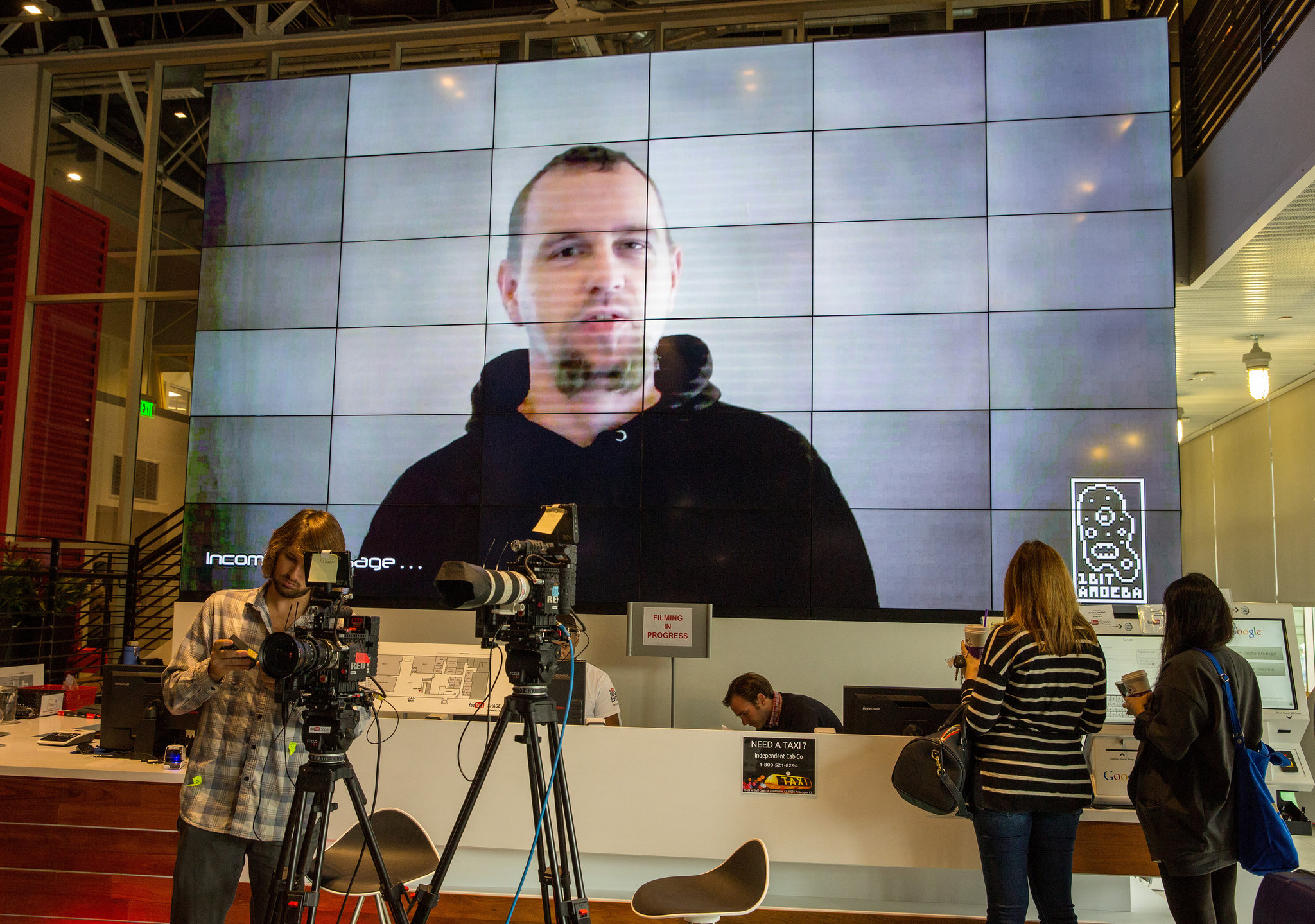
Inside the YouTube production center, crew members shot a segment of “The Next Great Starship,” a reality-based competition series. – MONICA ALMEIDA / THE NEW YORK TIMES
Jason Calacanis, who received a $1 million YouTube grant to encourage his company to produce more of its popular cooking and lifestyle videos, set off a mini-firestorm last summer when he published an article explaining why he thought YouTube’s terms were unfair. Titled “I Ain’t Gonna Work on YouTube’s Farm No More,” after a Bob Dylan song, the article called YouTube’s take an “absurd” tax.
“We were huge fans of YouTube,” he said in a recent email exchange, “but we are not creating content anymore because it’s simply not sustainable. YouTube is an awesome place to build a brand, but it is a horrible place to build a business.”
Relaxing in a swivel chair in YouTube’s mod headquarters in downtown Los Angeles, Robert Kyncl, the company’s head of content and business operations, acknowledged the fundamental tension built into the YouTube business model. Yes, he acknowledged, revenue per views is depressed and will probably drop even further in the near future as high-growth markets like Brazil and Russia continue to expand. But Mr. Kyncl is unapologetic. “If you had a choice, would you choke off that growth,” he asked, “or would you let it grow?”
“No other platform has invested in video delivery like we have in terms of ad force and technology,” he said. “There are huge amounts of people behind it and costs.”
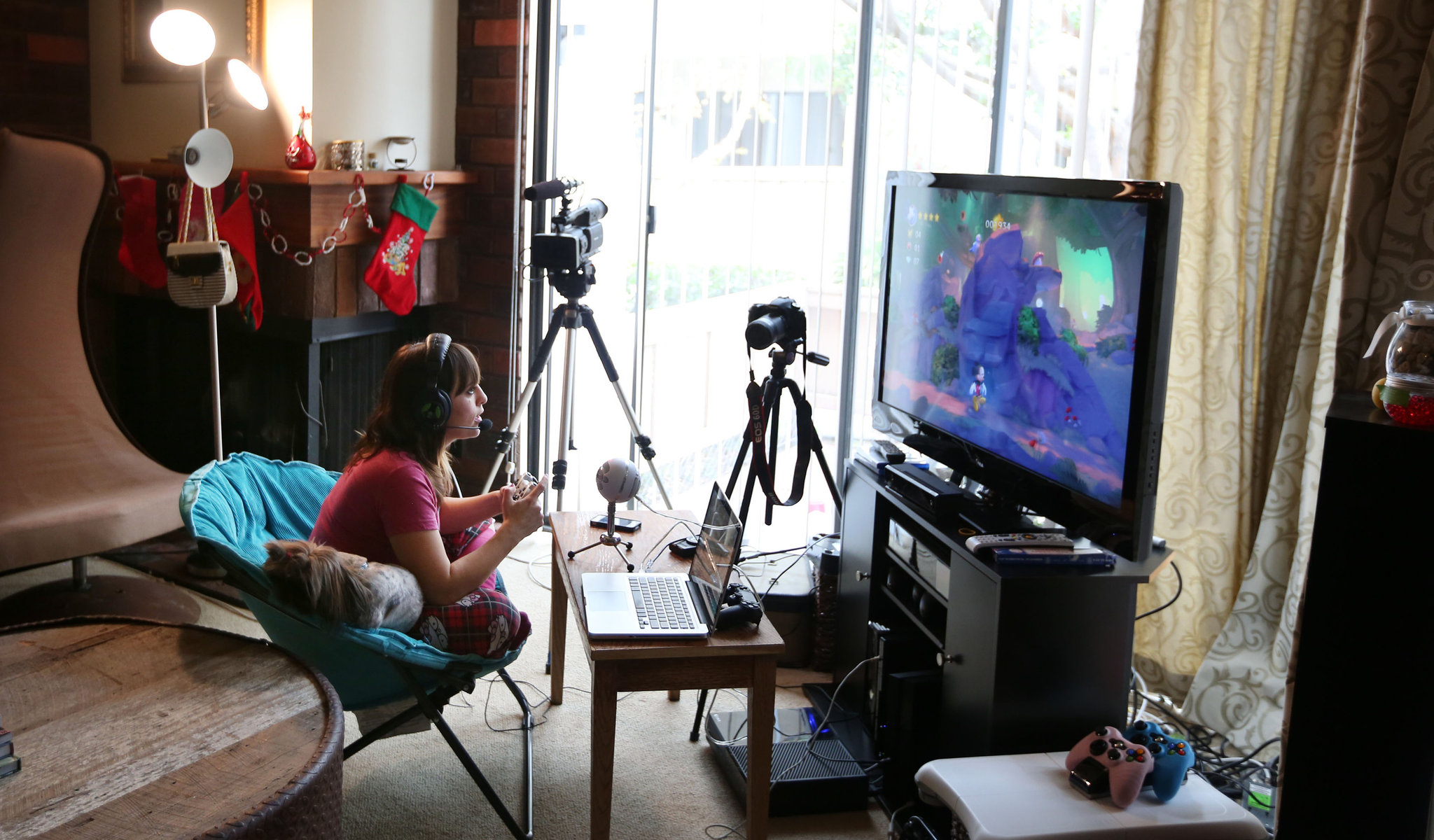
Ms. Kay worked from home on her video-game channel. – J. EMILIO FLORES FOR THE NEW YORK TIMES
Google, which has owned YouTube since 2006, has put its worldwide advertising sales force of 12,000 behind the platform. Mr. Kyncl also cited the investments that allow for high-quality video uploading from all over the world, even on cellphones or other mobile devices. All of this has made YouTube more attractive to A-listers. Hollywood studios like DreamWorks Animation and 21st Century Fox have each made substantial investments in multimedia studios to enter the YouTube market, and stars like the British comedian Ricky Gervais and the celebrity chef Jamie Oliver have started channels.
As a result, once-wary advertisers are pouring in. In 2013, YouTube attracted all of Advertising Age’s 100 top spending brands. The company’s ad revenue for last year, according to eMarketer, totaled about $5.6 billion, up 51 percent from 2012. (By comparison, CBS, the most-watched network and three-quarters of a century old, reported $8.5 billion in ad revenue in 2012, the last full year for which data is available.)
It’s a lot of money, but it is spread so thinly among the many content providers that an increasing number are saying they aren’t so sure that the deal makes sense for them financially.
Some executives of media companies that post videos to YouTube and other sites make basically the same point: YouTube is uploading videos so quickly that it can’t sell enough ads to fill all the potential spaces. It is especially lagging, they say, in selling ads to its two fastest-growing audiences: those coming through mobile devices and those overseas. The executives spoke on condition of anonymity for fear of angering YouTube.
On YouTube, the average rate for pre-roll ads, those 30-second commercials that you must watch before seeing a video, is $7.60 per 1,000 ad views, down from $9.35 in 2012, according to TubeMogul, a video ad-buying software company. The same pre-roll ad on a broadcaster’s site, like that of CBS or CNN, would cost more than $20 per 1,000 views.
David Burch, a TubeMogul spokesman, says that most YouTube video makers do not sell an ad on every view of a video. “It varies a ton, but it wouldn’t usually be more than half, and for many partners it is more like two out of every 10 views will have a video ad,” he said. “It is an advertiser’s market.”
In such a situation, he said, ads for two out of every 10 views would amount to $2,000, based on a million views. And then YouTube takes 45 percent.
No wonder providers are protesting. “Your cost of production — which would including shooting, location, lights, cameras, sounds and editing — is going to be thousands of dollars per video,” said Mr. Calacanis, who stopped investing in his YouTube operation in July and turned his attention to Inside.com, a mobile news app he is developing. “For 10 ‘advertiser friendly’ videos of YouTube length, you would spend at least $25,000 to $75,000. This means you are in deep in the red before you take into account your talent.”
Mr. Kyncl of YouTube said that aspiring content creators who looked only at the cost equation were taking the wrong approach. What YouTube offers, he said, is a chance to build a worldwide viewership that can lead to income from sources other than direct ads. As an example of a successful switchover, he points to Bassem Youssef, a Cairo heart surgeon, who offered a show something like “The Daily Show With Jon Stewart,” won five million viewers in a few months and got a contract with an Egyptian television channel. Or there is Awesomeness TV, a network for teenagers, which was built for YouTube but now has content on Nickelodeon and intends to use YouTube as a “farm team” for TV.
“The more successful you are on YouTube,” Mr. Kyncl said, “the more you should think about diversifying.”
Olga Kay grew up in rural Russia until her family ran out of money and she went to work for a circus. She learned to juggle and eventually got a visa to come to the United States to join the Ringling Brothers and Barnum & Bailey circus. She began to get work in commercials — for example, juggling glasses in a Smirnoff Vodka ad. In 2002, she moved to Hollywood, looking for a career in show business.
At the time, YouTube was a burgeoning phenomenon, and Ms. Kay was sucked in. In 2006, she began a video blog about her daily life and soon had tens of thousands of followers. In 2009, she added a second channel, featuring skits with characters like Emo Girl, a self-involved, overly emotional teenager whom Ms. Kay plays by wearing a black wig and lots of black eyeliner. Her first Emo Girl video, “Doctors Want to Have Sex With You,” got a half-million views in about two weeks.
There was “no breakout moment,” she says, just a constant push to expand. “I am always growing through real avenues and not counting on a viral hit.”
Advertisers noticed the traffic she was attracting and began to approach her. In 2009, she said, Ford gave her a car and some gasoline for a year; in return, she had to feature the car in a video once a month. It was around then that Ms. Kay decided that she could build her channels into a full-time career.
At the end of 2009, she started quoting a rate of $75 per thousand views to advertisers who wanted her to promote their products on her site. In 2011, she added the video gaming channel and, a year later, the beauty channel. She says she is interested in both topics, but both also happen to be rapidly growing subgroups of YouTube.
Currently, she says, more than one million people, generally female and 13 to 21 years old, subscribe to all her channels combined — which means they have clicked a button asking to receive notice when she posts something new.
That kind of traffic gives her a strong base for pre-roll ads, but not enough to make up for declining rates over all. The problem is worsened by the fact that fat sponsorship deals for promoting products directly are increasingly rare — and even when they come through, they are not as lucrative as they seem.
“We are underpaid,” Ms. Kay says. “We are not only coming up with the commercial concept and tapping into a loyal audience, we are also doing marketing. We are doing all of these jobs for a relatively small fee.”
And those costs are going up as expectations rise for higher-quality videos. A year ago, Ms. Kay was among the first groups of creators to be tapped for a free fellowship at YouTube’s new production studios. There, she received training in topics as diverse as copyright infringement law and how to do better lighting.
The one requirement of the fellowship was that she produce a video with high production values. She made a psychological thriller called “My Better Half.” YouTube gave her free access to its studio space and sets and camera equipment, but she had to cover the costs of crew, actors and costumes. The costs stung: “You know you have to feed them, too,” she said of the crew.
To keep up with her daily channels and improve their visual quality, she has had to hire an editor, costing $500 to $700 a week when he works full time. It all adds up.
“My friends and I talk about it all the time,” she said, “But we think if we were coming to YouTube today, it would be too hard. We couldn’t do it.”
Close